Alaska 2024 - Day 4 Sitka

Monday, 12 August 2024
Heading down Chilkoot Inlet, with a jog to starboard, we headed out to the open North Pacific for our trip to Sitka. There was a bit more motion than on previous days as we were outside the 12 nautical mile limit and away from shore for about the last 1/3 of the trip.
Our weather luck was holding out. It was still on the chilly side but not as windy with scattered cloud cover. Our Raptors and Ravens excursion met at 11:00 a.m., so we had a bit more time to eat a leisurely breakfast, relax, and prepare before heading out to meet with our tour guide and group.
This tour was a bit bigger than previous excursions, with about 32 people on a pretty big bus. We had an indigenous guide sharing interesting history of the island and people, and providing advice about how to safely see the sights. Stay with the group, and stay on the trails. The main threat was bears.
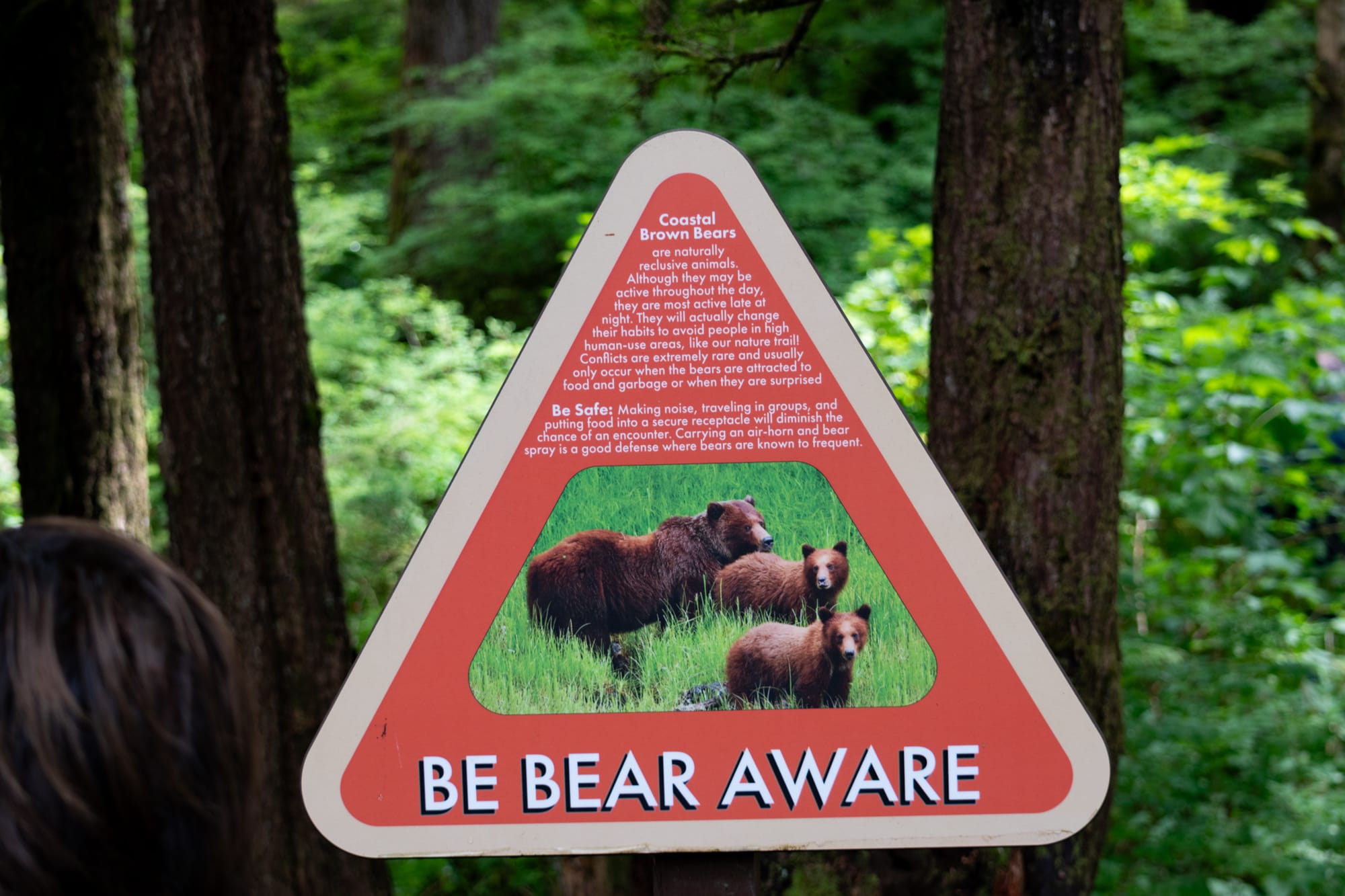
The Sitka National Historical Park and Museum was our first stop. We crossed a stream full of migrating salmon on our way to the exhibition building.
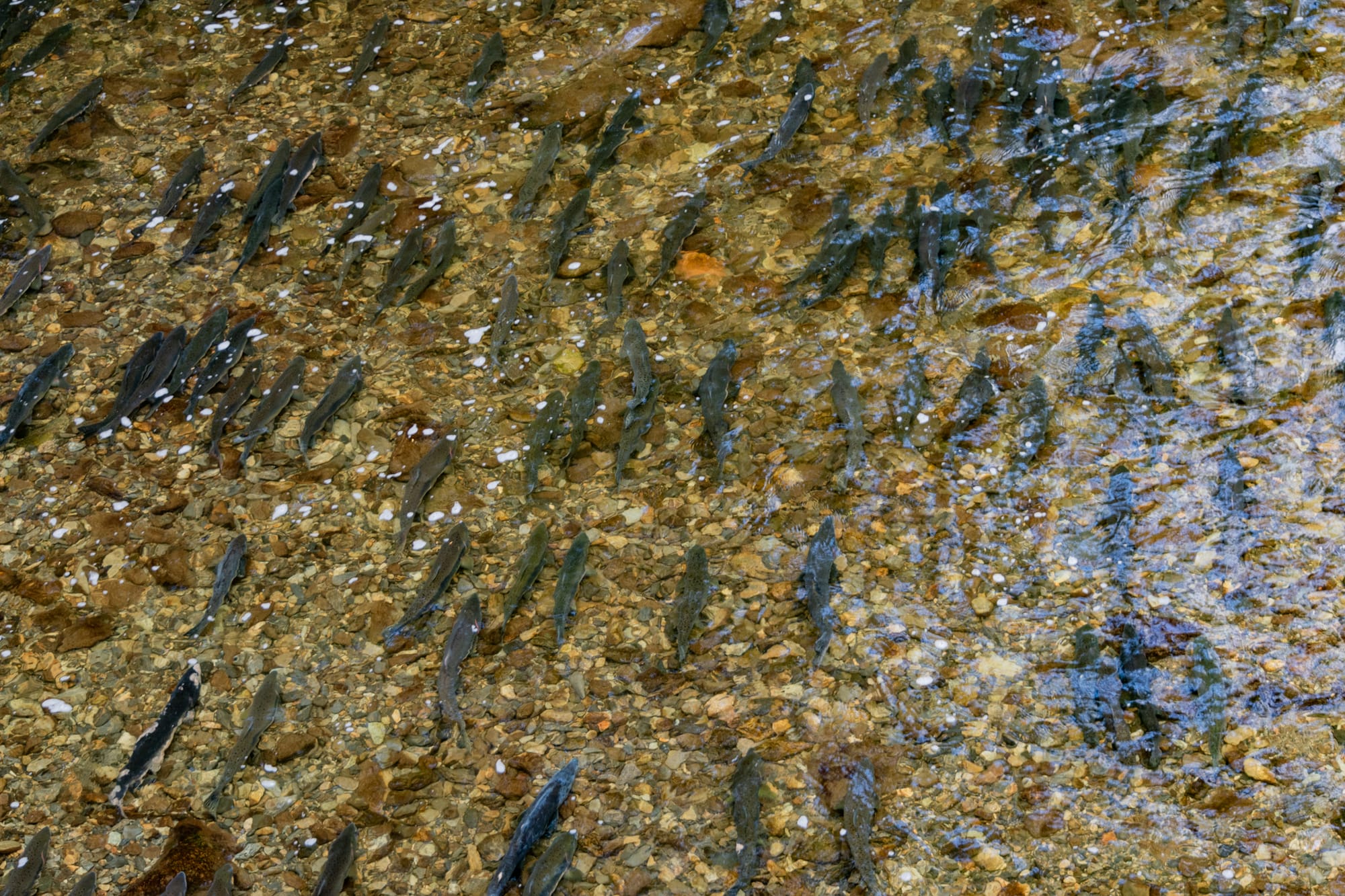
That many salmon all together was quite a site. Our guide said that once they spawn and die, the place gets pretty smelly from all the dead fish. They hope for a big ran to clear out the streams.
The park had a nicely laid out, spacious museum with art and tools and materials used by the indigenous Tlingit people. Whenever I heard a Tlingit person say the word Tlingit, it sounded like they were saying "klinkit." It means "people of the tides."
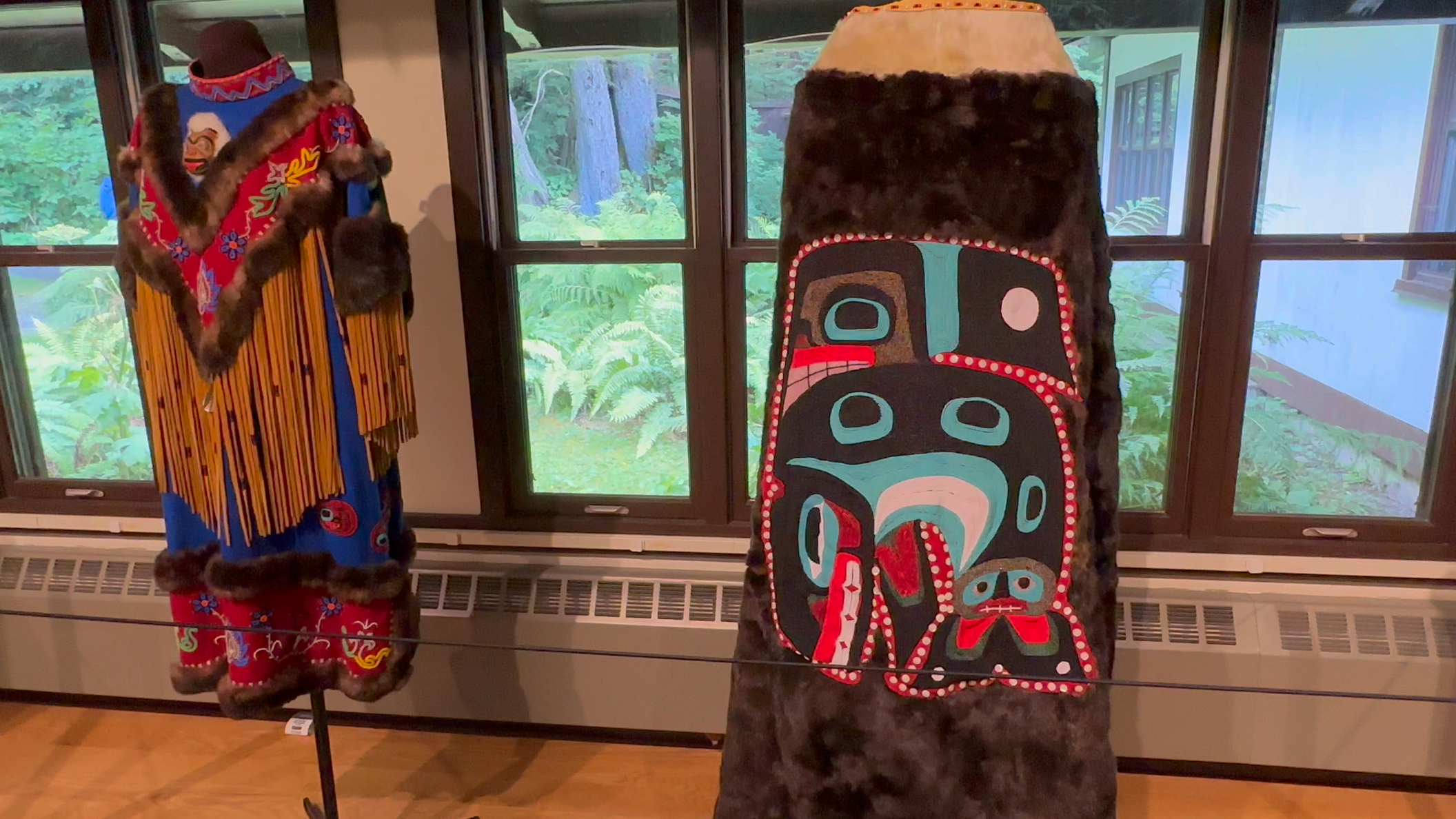
We were only at the park and museum for about 1/2 hour, but even with a whirlwind tour, it was beautiful and interesting.
Next, we were off to the Alaska Raptor Center, a non-profit organization dedicated to healing, and whenever possible, releasing wounded birds back into the wild. The park is 17 acres, with areas for birds in all stages of recovery, from a large, covered indoor facility, to transitional areas, to open spaces.
Some of the excursions kind of set us up for a way to capture close up, natural looking photographs of the local wildlife. The Alaska Raptor Center provided opportunities to get great close up in the wild looking photos of bald eagles and golden eagles.

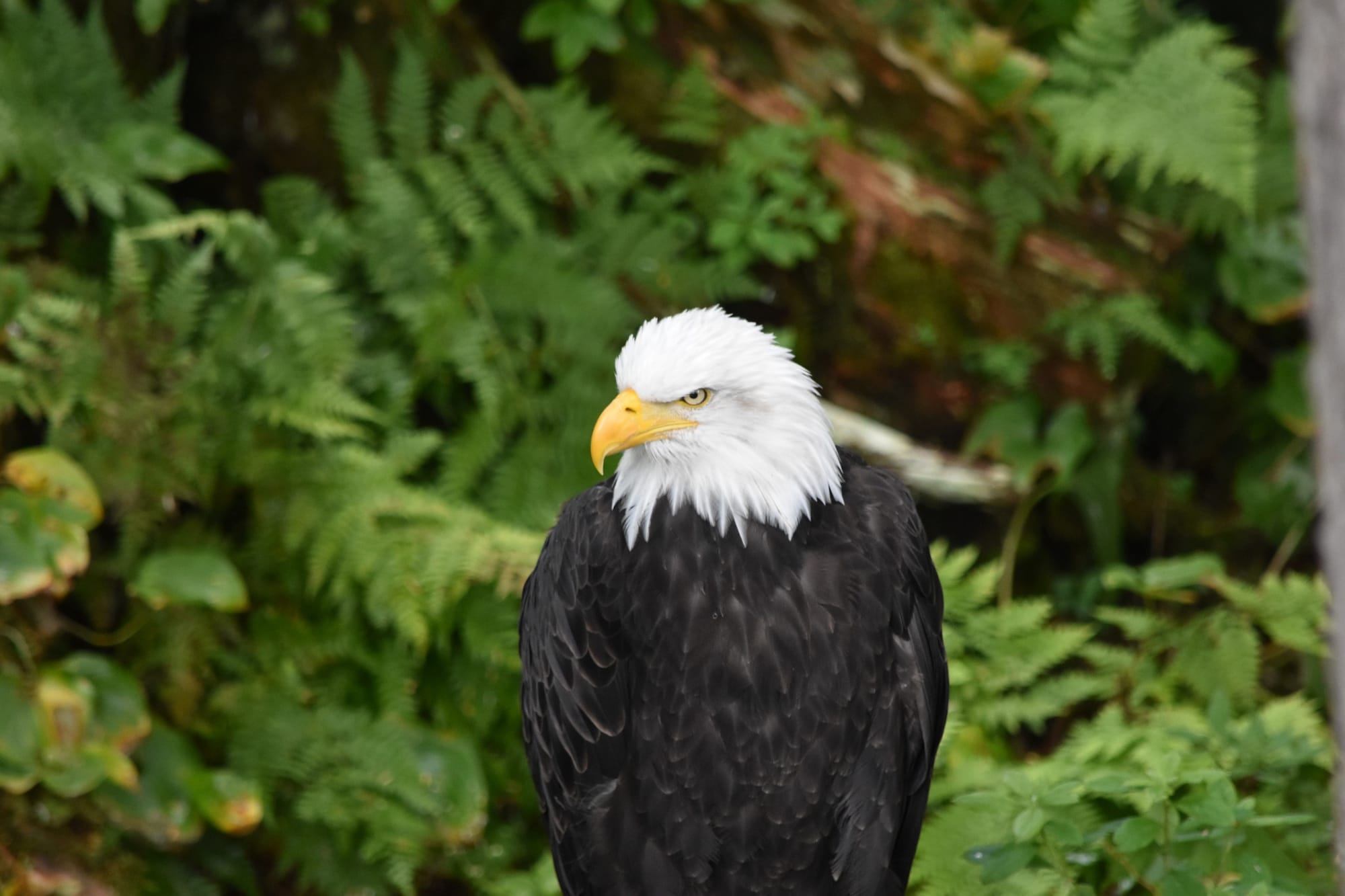
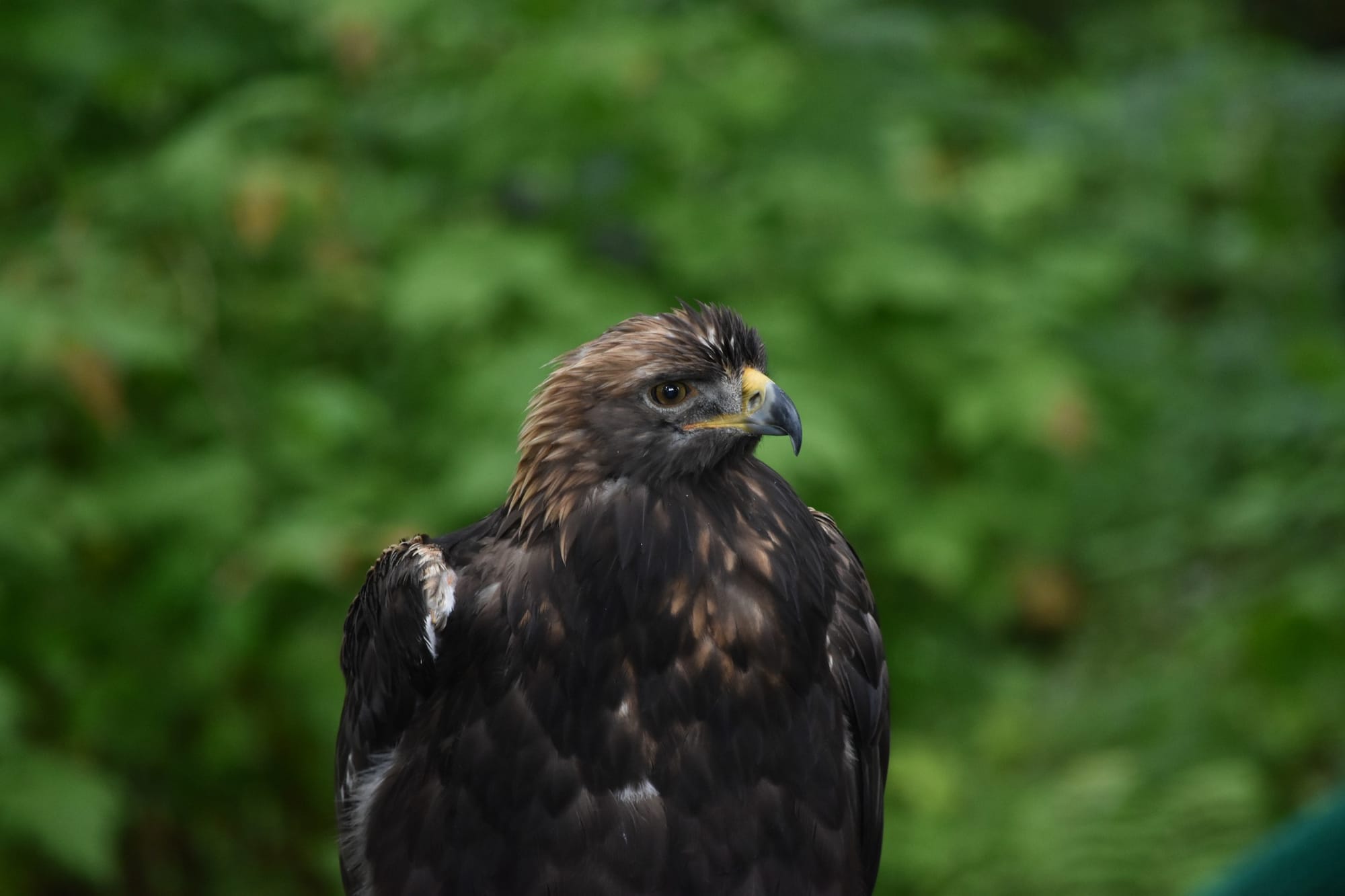
Neither my wildlife photography skills nor my equipment would have made it very likely I could capture such shots in the wild. These birds lived in the sanctuary. While they were outdoors, allowing for these spectacular shots, the weren't about to fly away at any moment. I'm not sure they could fly. The weren't tethered or caged, but were in a kind of enclosure and seemed to live there.
The photo below shows three bald eagles in their apparent home at the sanctuary.
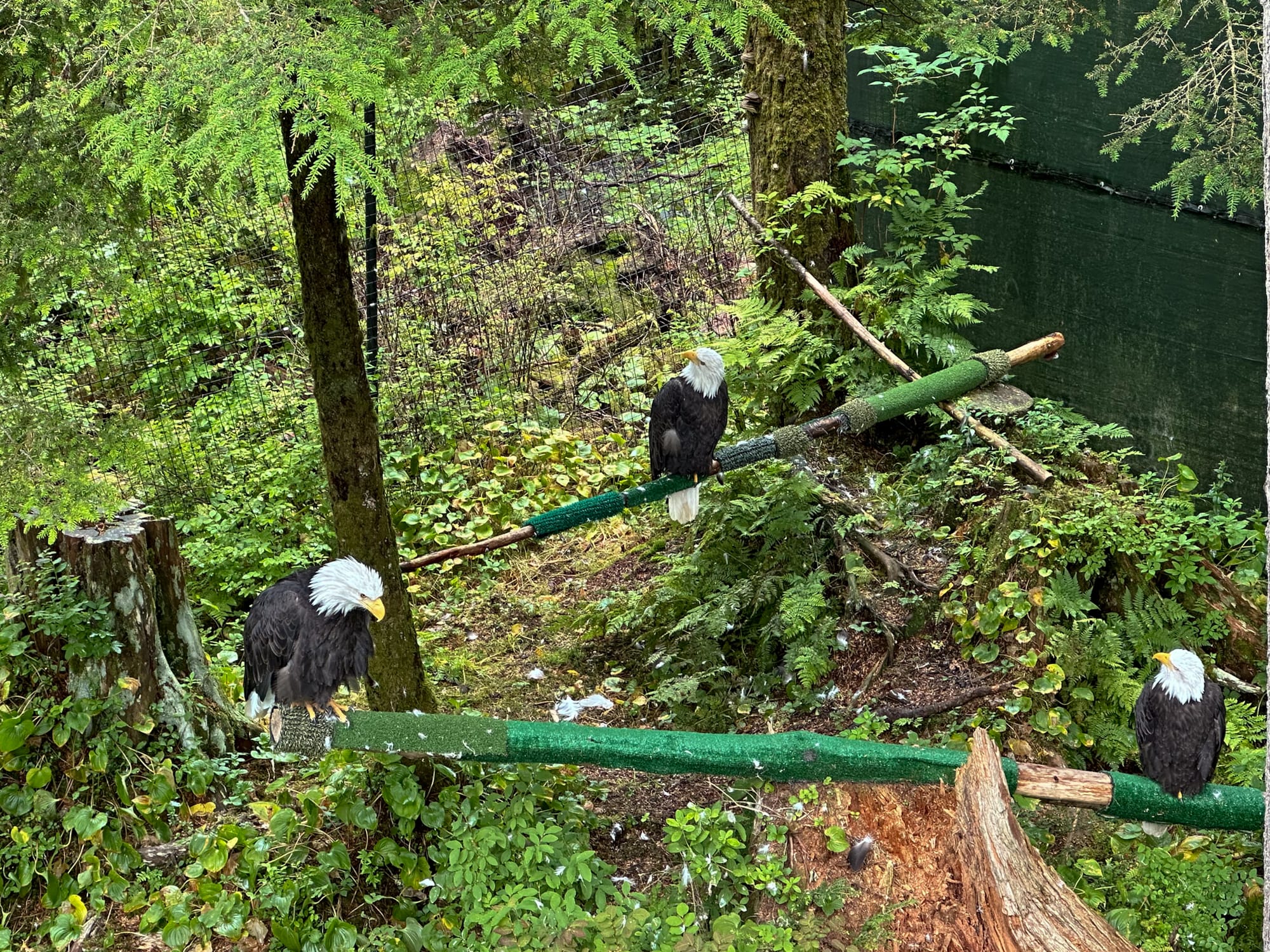
You can see, it wasn't too difficult to grab some really sharp closeup photos with a wild looking background using a relatively small telephoto lens.
For contrast, see the photo below of an eagle in the wild taken from a boat during one of our other excursions.

I don't mean to denigrate my skills. I'm not a horrible photographer, but I'm not a professional wildlife photographer by any stretch. I'm really happy the people setting up the expeditions plan these opportunities into the excursions offered. There were similar opportunities for photographing whales, sea lions, and otters, with photos in upcoming blog posts.
There were a few more enclosures that were completely fenced and covered, and the birds recovering in them were tethered.
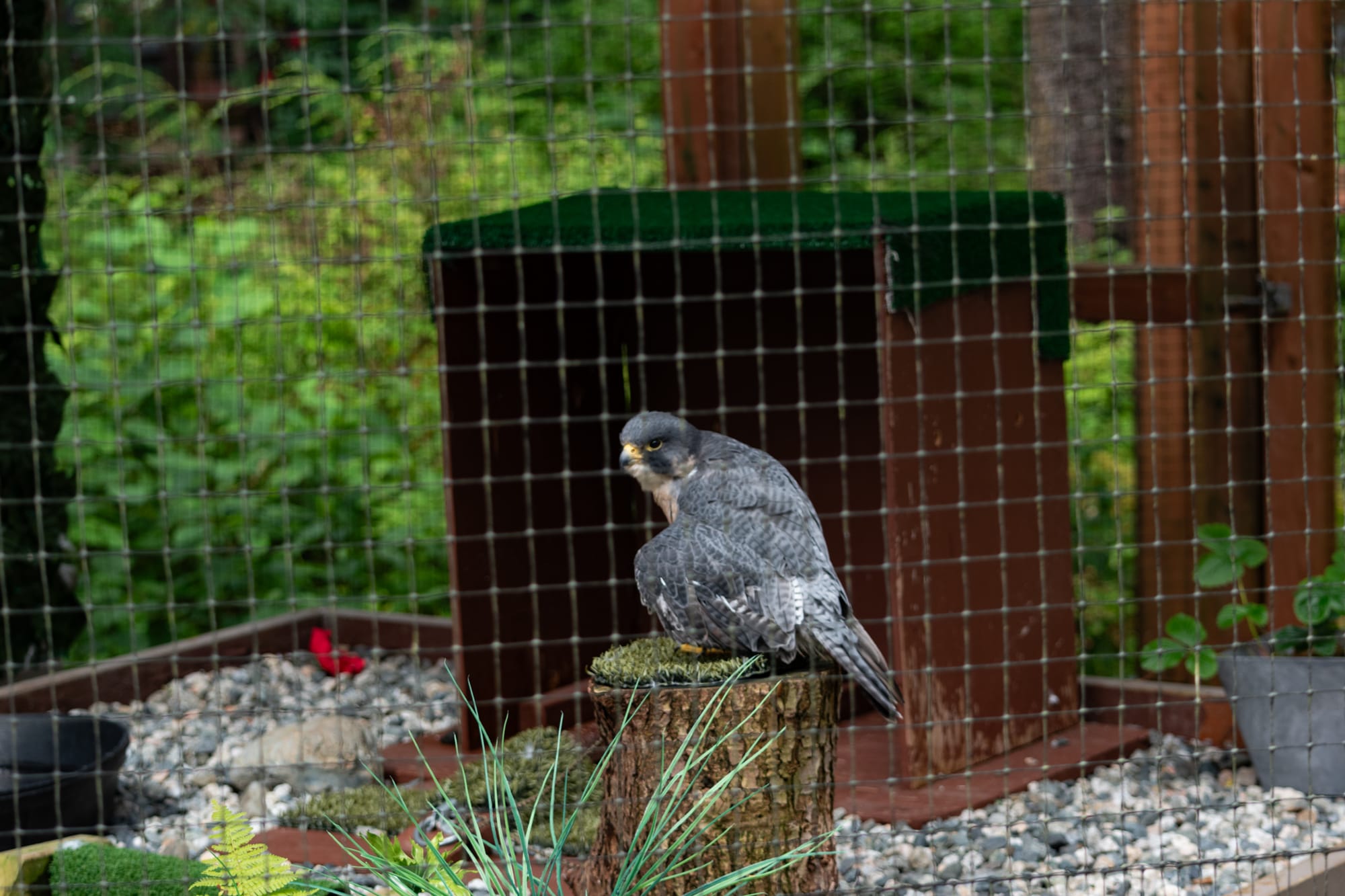
These were used to acclimate the birds to outdoor sights, sounds, smells, temperature, and humidity, and to allow them to test their flight skills with an element of safety.
After the Raptor Center, our guide took us to a Tlingit tribal house. It was really interesting to see, but due to low light inside, I don't have any nice photos to share. There's one photo Galina took of me standing in front of the entrance to the tribal house and museum.
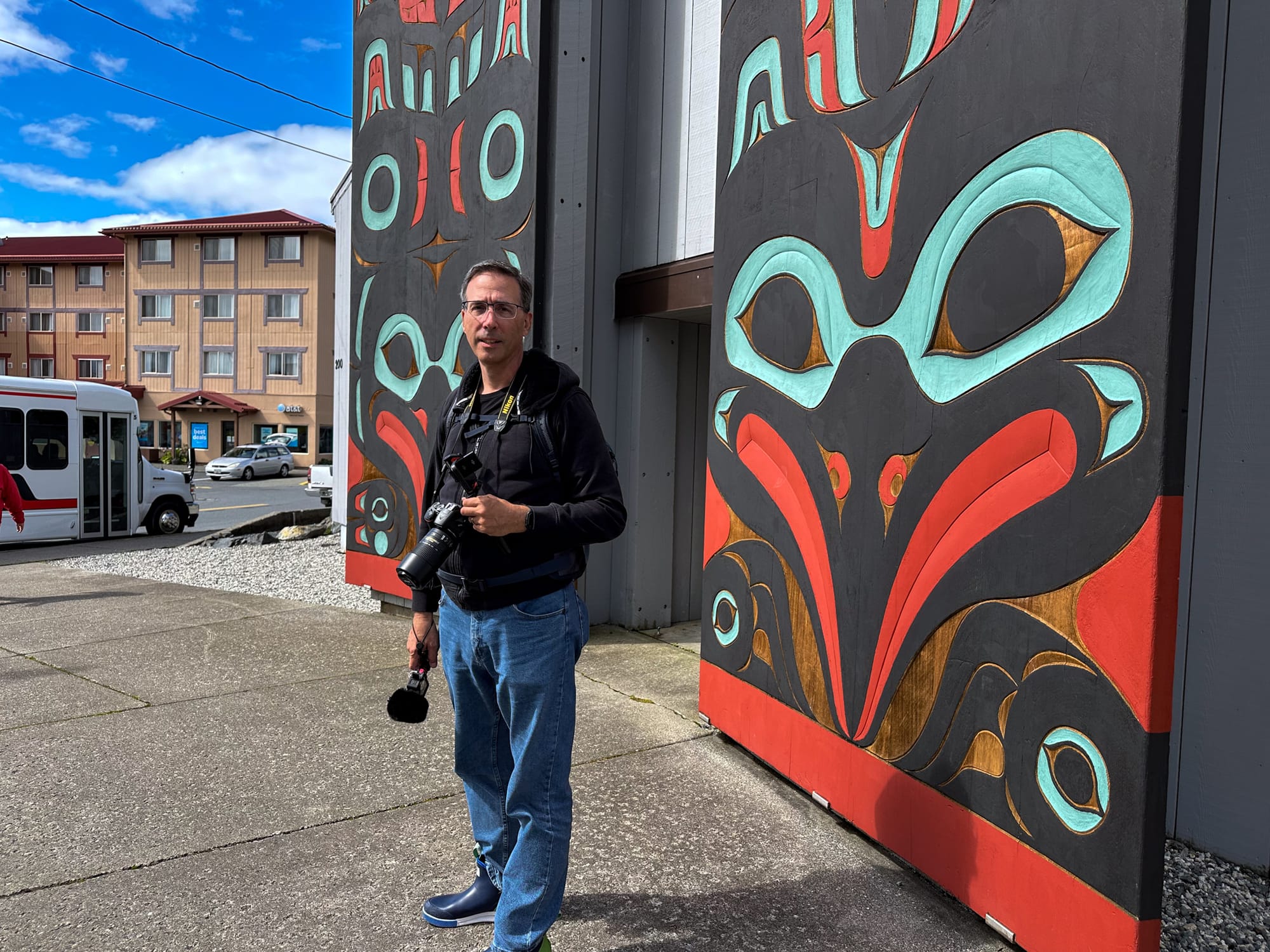
We stopped at the Pioneers Home Gift Shop on the way back to the ship. We heard about it from a video on the Legg Life YouTube channel. They have arts and crafts made by residents at very reasonable prices and sales go to support the residents. As mentioned on Legg Life, they require cash for purchases. We had little time onsite and tried the closest ATM but it was down, so we weren't able to get a few items we had hoped to buy.
After that, we headed back to the ship to rest up, get ready for dinner, and prepare for our next destination, Wrengell Island.
